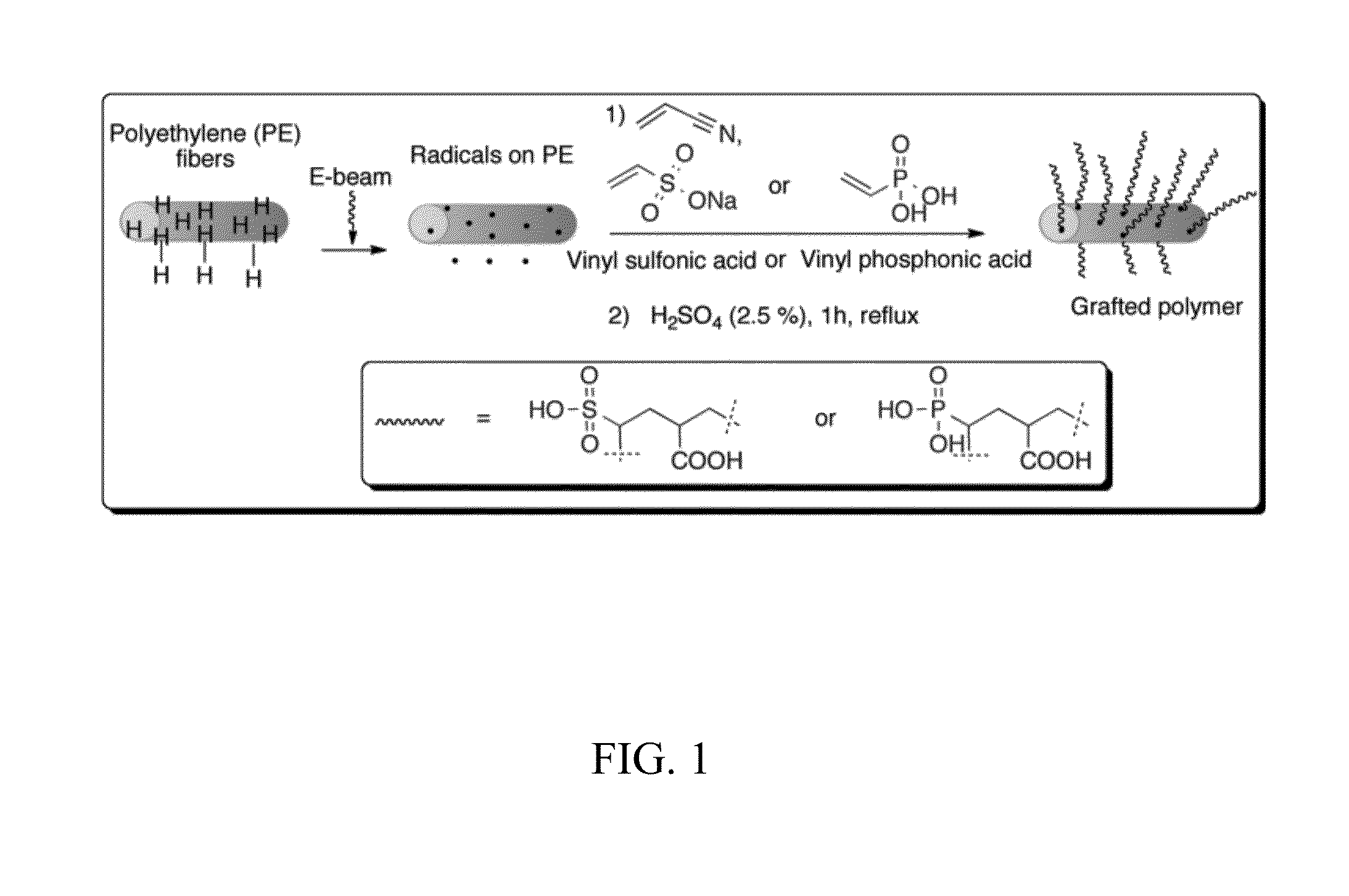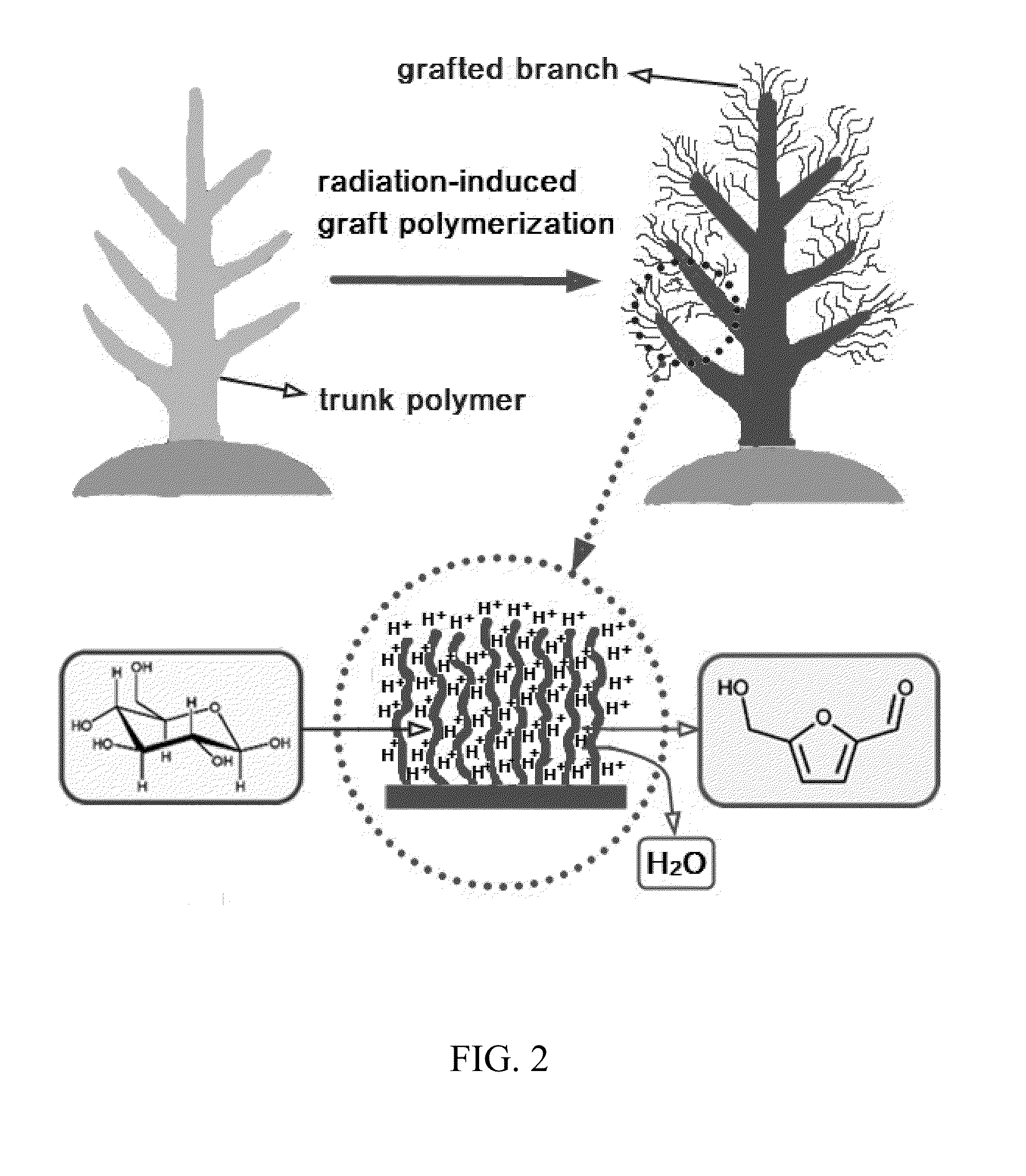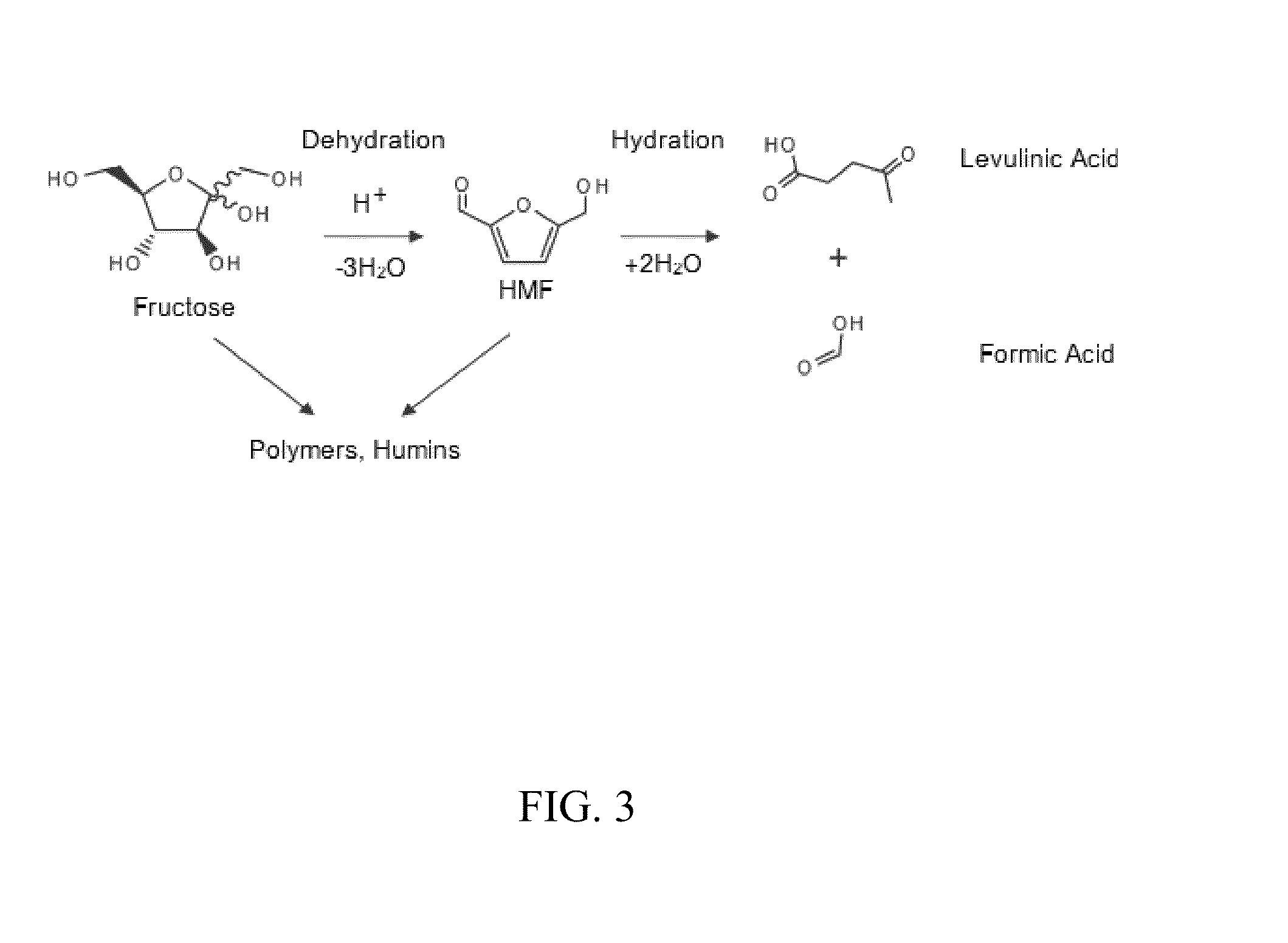Acid-functionalized polyolefin materials and their use in acid-promoted chemical reactions
- Summary
- Abstract
- Description
- Claims
- Application Information
AI Technical Summary
Benefits of technology
Problems solved by technology
Method used
Image
Examples
examples
Synthesis of 5-Hydroxymethylfurfural from Fructose in Water by Use of a Recyclable Heterogeneous SO3 / PO3-Polyethylene Grafted Fiber Catalyst
Overview
[0057]Renewable biomass resources have the potential to reduce the demand on fossil fuels as a feedstock for the production of plastics and fine chemicals. In particular, furan derivatives, such as 5-hydroxymethylfurfural (HMF), have been identified as a key intermediate for the production of carbohydrate-derived chemical feedstocks, pharmaceuticals, and fuels. HMF can be obtained from renewable biomass resources by an acid-catalyzed dehydration of hexoses. Unfortunately, the high production cost of HMF limits its use on an industrial scale. To increase the yield of fructose to HMF, many catalysts have been explored, including liquid acids, solid acids (e.g., H-mordenites / zeolites), transition metal phosphates, protonated titanate nanotubes, and Lewis acids, such as metal chlorides and niobic acid. Although soluble acids are inexpensive ...
PUM
 Login to View More
Login to View More Abstract
Description
Claims
Application Information
 Login to View More
Login to View More - R&D
- Intellectual Property
- Life Sciences
- Materials
- Tech Scout
- Unparalleled Data Quality
- Higher Quality Content
- 60% Fewer Hallucinations
Browse by: Latest US Patents, China's latest patents, Technical Efficacy Thesaurus, Application Domain, Technology Topic, Popular Technical Reports.
© 2025 PatSnap. All rights reserved.Legal|Privacy policy|Modern Slavery Act Transparency Statement|Sitemap|About US| Contact US: help@patsnap.com



